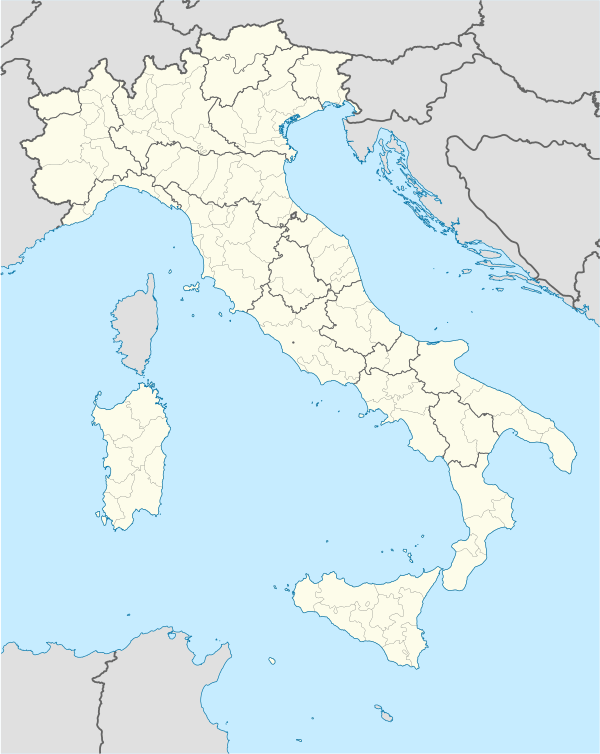Acerra
| Acerra | |
|---|---|
| Comune | |
| Metropolitan City of Naples | |
|
Aerial photo of Acerra | |
 Acerra Location of Acerra in Italy | |
| Coordinates: 40°57′N 14°22′E / 40.950°N 14.367°ECoordinates: 40°57′N 14°22′E / 40.950°N 14.367°E | |
| Country | Italy |
| Region | Campania |
| Frazioni | Gaudello, Pezzalunga |
| Government | |
| • Mayor | Raffaele Lettieri (UdC) |
| Area | |
| • Total | 54.08 km2 (20.88 sq mi) |
| Elevation | 26 m (85 ft) |
| Population (1 April 2009) | |
| • Total | 55,003 |
| • Density | 1,000/km2 (2,600/sq mi) |
| Demonym | Acerrani |
| Time zone | CET (UTC+1) |
| • Summer (DST) | CEST (UTC+2) |
| Postal code | 80011 |
| Dialing code | 081 |
| Patron saint | St. Cuono and Conello |
| Saint day | 29 May |
| Website | Official website |
Acerra is a town and comune of Campania, southern Italy, in the Metropolitan City of Naples, about 15 kilometres (9 miles) northeast of the capital in Naples. It is part of the Agro Acerrano plain.
History
Acerra is one of the most ancient cities of the region, probably founded by the Osci with the name of Akeru (Latin: Acerrae). It was the first Roman city that was granted the status of civitas sine suffragio (332 BC).
Acerra was destroyed by Hannibal in 216 BC, but was restored in 210 BC.
Acerra served as a Roman base during the Social War in 90 BC.[1]
In 826 the Lombards built here a castle, later destroyed by Bono of Naples. In 881 it was sacked by the Saracens. Later it was a Norman possession, the seat of a county. As part of the Kingdom of Naples, it was a fief of the Aquino, the Origlia, the Orsini del Balzo and, from 1496 until 1812, the Cardenas. From 1927 it was part of the province of Terra di Lavoro.
Main sights
- Acerra Cathedral, originally built over an ancient temple of Hercules and remade in the 19th century. It houses some Baroque canvasses from the 17th century. Annexed is the Bishop's Palace.
- Church of Corpus Domini (16th century).
- Church of Annunziata (15th century), with a 12th-century crucifix and a 15th-century Annunciation attributed to Dello Delli.
- Church of San Pietro (16th-17th centuries)
- Baronal Castle.
- Archaeological area of Suessula. Location 40°59'23.47"N 14°23'53.41"E
References
- ↑ Canby, Courtlandt. The Encyclopedia of Historic Places. (New York: Facts of File Publicantions, 1984) p. 6
External links
- Acerrae in William Smith’s Dictionary of Greek and Roman Geography (1854).
